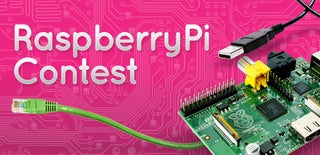Introduction: Raspberry Pi Remote for Free!
For my first ible I just wanted to give everyone a quick tutorial on how to use the HDMI-CEC protocol to control your Pi with your Tv's remote control.
This is very useful because is saves you from having to buy a remote just for your Pi and also leaves you with an open usb that you would have needed for your wireless keyboard and mouse.
Step 1: Do You Have CEC?
Every manufacturer has a different trade name for CEC,
Samsung - Anynet+
Sony - BRAVIA Link or BRAVIA Sync
Sharp - Aquos Link
Hitachi - HDMI-CECAOC - E-link
Pioneer - Kuro Link
Toshiba - Regza Link or CE-Link
LG - SimpLink
Panasonic - VIERA Link or HDAVI Control or EZ-Sync
Philips - EasyLink
If your TV has a button, logo, or menu with one of these names or similar, congratulations you have CEC!
Step 2: Getting Set Up
I'm going to be using an LG - 42LD450 and a Panasonic TC - P50X2 as examples. My Raspberry Pi is a type B and is running Raspbmc. Most of the steps will be very similar in most Tv's. If your lucky you might only have to plug in your Pi without any additional steps!
Get your Raspberry Pi hooked up using HDMI (obviously to use HDMI -CEC you have to use and HDMI cable for video)
Step 3: LG TV
For my LG tv these are the steps.
1. Turn on the tv and go to the Raspberry Pi input.
2. Boot up the Pi and wait for it to get to the Raspbmc home screen.
3. Press 'SimpLink' on your tv's remote.
4. Turn it on
5. ENJOY!
The tv and the Pi are now 'paired' and the tv remote will control the basic functions in Raspbmc. Play, pause, directional arrows, ok etc.
Step 4: Panasonic TV
Same as before,
1. Turn on tv to the Pi's input, boot Pi.
2. On the tv, menu - > setup - > Viera link setting - > ON
3. Done!
This tv will even turn on and off when you boot and shutdown Raspbmc.
Step 5: Extra Tips for Home Theater Set Up
1. Use your tv's usb port to power your Pi. This will save you a power outlet and phone charger.
2. Use an Ethernet cable and save all your movies on a network drive. Now you don't need a powered hub or hard drives behind your TV.
3. Consider overclocking and using a simpler skin to give a quicker response.
Please Vote!

Participated in the
Raspberry Pi Contest











